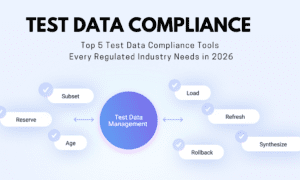As the world of finance continues to evolve, digital currencies are becoming central to global economic discussions. Among the latest additions to the crypto spotlight is BRICS Coin—an initiative reportedly backed by some of the world’s largest emerging economies. With Bitcoin already established as the leading cryptocurrency, many investors and analysts are now debating whether this new entrant could pose a real challenge. More importantly, when it comes to long-term price growth, which one offers greater potential?
To answer that, it’s essential to understand what each coin represents, how they function, and what could influence their future value.
Bitcoin: The Original Cryptocurrency

Launched in 2009, Bitcoin was designed as a decentralized digital currency, allowing peer-to-peer transactions without banks or middlemen. Over time, it evolved into a store of value and an inflation hedge, often compared to digital gold. What makes Bitcoin especially appealing is its limited supply—only 21 million coins will ever exist. This built-in scarcity, combined with growing institutional interest and mainstream adoption, has fueled its long-term price growth.
Bitcoin’s value comes from more than just its price. It has developed a solid reputation, strong community, and widespread infrastructure that includes wallets, exchanges, and legal frameworks in many countries. It also benefits from being blockchain-based, ensuring transparency and security. Despite its volatility, Bitcoin has remained the go-to digital asset for both new and seasoned investors.
BRICS Coin: A Strategic Financial Move
BRICS Coin represents a very different kind of cryptocurrency. Unlike Bitcoin, which operates independently of governments and institutions, BRICS Coin is expected to be a state-backed digital currency. The idea is to create a unified payment solution that enables trade between the BRICS nations without depending on the U.S. dollar.
This approach could lead to significant changes in global finance, especially if the coin is backed by real-world assets like gold, commodities, or national currencies. Such a backing could make it more stable than traditional cryptocurrencies. Moreover, by aligning with the political and economic goals of several powerful countries, it may gain strong institutional support.
However, coordination among these diverse economies will be a challenge. Each country has different financial systems, policies, and priorities. Whether they can agree on how the currency should function remains to be seen. Still, the concept is drawing attention, especially among those watching global shifts in economic power.
What Drives Price Potential?
Price potential in cryptocurrencies depends on several key factors—scarcity, adoption, utility, and investor confidence. Bitcoin checks all of these boxes. It has a known supply limit, is increasingly used in real-world scenarios, and enjoys global acceptance. Its price is largely market-driven, fluctuating with supply and demand dynamics.
BRICS Coin, on the other hand, could derive its value from strategic use in global trade and government-level support. If it becomes the standard for transactions among participating nations, its utility could be massive. That would naturally impact the brics coin price in the long run, especially if it’s consistently used in large-scale economic deals.
However, price growth might be slower and more stable compared to Bitcoin. This is because it would likely be designed to act more like a stable currency than a speculative investment. While this stability is good for trade, it might limit the kind of sharp price increases seen in Bitcoin.
Adoption and Market Sentiment
Bitcoin already enjoys wide adoption. It’s traded on nearly every major crypto exchange, accepted by various businesses, and even held by public companies as a treasury asset. Its brand recognition is unmatched in the digital currency world. Moreover, despite regulatory pressure in some regions, it has proven resilient, adapting to market changes while maintaining investor interest.
BRICS Coin is still in its development phase, with public information limited to official statements and media reports. For the brics coin price to gain momentum, it would need successful coordination among the BRICS countries, technical development, and user trust. It would also have to comply with varying regulatory environments, which could delay widespread adoption.
Nonetheless, its future looks promising if it manages to deliver on its goals. Its value proposition is entirely different—offering political and economic sovereignty rather than financial speculation.
The Bigger Picture: Different Paths, Different Roles
Bitcoin and BRICS Coin serve different purposes and are shaped by different motivations. Bitcoin is an open-source, decentralized system built for transparency and personal freedom in finance. It thrives in a market-driven environment and appeals to those who believe in technological disruption and monetary independence.
BRICS Coin, in contrast, is more about strategy and control. It’s being developed to offer alternatives to existing financial systems dominated by Western powers. If successfully implemented, it could trigger a major shift in how countries conduct international trade.
That said, their price trajectories will reflect their unique roles. Bitcoin will likely continue to experience volatility, offering high-reward potential for those who can handle the risks. BRICS Coin, if it reaches its full potential, could provide a more stable and politically grounded investment option.
Conclusion
So, which has more long-term price potential—Bitcoin or BRICS Coin?
It depends on what you value. Bitcoin is already proven, widely adopted, and operates on a transparent, decentralized network. It offers significant upside, though with high risk. BRICS Coin is still emerging but holds the promise of reshaping international finance through a collective, government-backed approach.
For investors with a high risk appetite and belief in decentralized finance, Bitcoin remains a powerful choice. For those watching geopolitical changes and seeking something tied to real-world trade and assets, BRICS Coin may present an entirely new kind of opportunity.






























